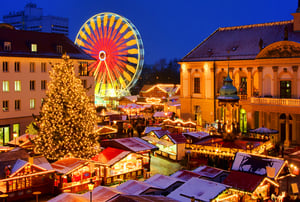
In 1925, Anatol Josepho unveiled the first automated photo booth, the Photomaton, in New York City. Nearly a century later, only around 200 working analog photo booths remain worldwide, with one now finding a home in downtown Manhattan.
Inspired by Parisian street-accessible booths, New Yorkers Zoë Lazerson, 27, and Brandon Minton, 25, lamented their scarcity in their home city. “It is the earliest selfie,” Lazerson remarked. Their passion led them to purchase a booth from St. Louis, embarking on a 30-hour round-trip journey to bring it to the Lower East Side.
Their booth, affectionately named "Old Friend," has become a sensation, especially among younger generations eager to experience the tactile joy of analog photography. "There’s something about having a physical photo in your hand," said Marlon, a customer on a bright winter day. The booth produces 400 to 700 photo strips daily, each session costing $8, with lines stretching up to 90 minutes.
Despite its popularity, maintaining an analog booth is no easy feat. The aging technology relies on parts no longer in production, and upkeep requires expertise from a small community of enthusiasts. Meags Fitzgerald, 37, a photo booth historian, is part of a dedicated 50-member group of technicians, owners, and collectors committed to preserving the legacy of these machines.
“It’s a 70-year-old technology, sometimes older, and the parts are brittle and can break,” Fitzgerald explained. The rise of digital technology in the late '90s led many companies to replace analog booths with instant digital versions, sidelining the intricate chemistry tanks and craftsmanship that define the analog experience.
As "Old Friend" continues to thrive in downtown Manhattan, it symbolizes not just a bygone era but the enduring appeal of capturing life’s fleeting moments in timeless style.
* NBC news contriubuted to this article.



























0 Comments